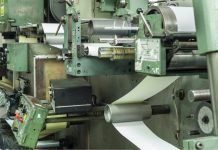Traditional coatings may not offer extended protection in industries where the material employed may be subjected to extreme temperatures, oxidation, and corrosion. It is used in aerospace, automotive, metallurgy, and electronics applications that need a coating that can withstand structural integrity and functionality at temperatures above 600 °C. It is in this regard that polysilazane-based coating has obtained extraordinary focus. Polysilazanes are known to be of high thermal stability, chemical and mechanical resistance, and have become a new standard in high-temperature surface protection. Current developments in formulation and curing technology are also increasing their versatility, such that they are becoming essential in difficult industrial conditions.
Learning About the Polysilazane Chemistry
Polysilazanes are preceramic polymer which has a backbone of silicon-nitrogen (Si-N). When these materials are subjected to heat or water, they are crosslinked to form silicon-based ceramics, including SiO₂, SiCN, or SiCNO. This results in a coating layer that has excellent hardness, adhesion, and thermal resistance.
The oddities of polysilazanes are that they can serve as a polymer and a ceramic precursor. They act as organic coatings at low temperatures, being flexible and easy to apply. Being subjected to high temperatures, they transform into an inorganic ceramic skeleton and create a strong protective layer that can resist oxidation and corrosion.
Thermal Stability and Oxidation Resistance
Polysilazane coatings have the greatest benefit of being very thermally stable. In the form of ceramic films, they are able to perform at temperatures up to 1000 °C, depending on the formulation. The coatings prevent oxidation of underlying metals and composite materials, even in the case of long-term thermal cycling.
At elevated temperature, the oxidation of the Si-N backbone progresses slowly to a continuous layer of adherent silica (SiO₂). This transparent coating is a self-healing protective layer that prevents diffusion of oxygen and hence lessens the deterioration of the material.
Chemical Modification for Adhesion and Flexibility
Although their heat resistance was good, early polysilazane coating materials were brittle and lacked the ability to flex, and therefore, this restricted their practical application. Such additions add elasticity to the curing film, thus enabling it to bend or flex without cracking even when under high stress. Indicatively, silicone-modified polysilazanes withstand adhesion following a 180 ° bend test, and this indicates an incredible toughness and strength of bonding at the surface.
Low Curing Temperatures and Energy Conservation
Historically, the manufacturing of ceramic glazes used to demand firing at a high temperature of above 400 °C to dry, and this may be costly and consumes energy. Modern technologies have allowed for the consumption of energy in the manufacturing process and the use of materials sensitive to temperature, like composites and plastics, as well as polysilazanes. It is also curable in low conditions, and this can be easily applied on-site in large-scale industrial coating. It can also be cured in mild conditions, which makes it easier to apply on-site and on large-scale industrial coatings. These low-temperature curing systems represent a significant step toward sustainable high-performance coating because industries need to minimize their energy costs, as well as their carbon emission.
Uses in High-Temperature Industries
The polysilazane coatings have led to the increasing use of the versatile product in many industries. They are used in aerospace to shield turbine blades and engine parts against oxidation and erosion. They are utilized in the automotive engineering field in exhaust manifolds, cylinder heads, and electric vehicle battery housings, where they offer both heat and chemical resistance.
Polysilazanes are electronics encapsulants and thermal cycling protective coatings. They are also used in optical and semiconductor applications due to their excellent dielectric and transparency properties. Also, polysilazane coatings are used as corrosion-resistant layers in reactors, pipelines, and furnaces in chemical processing and metallurgy, which increases the service life in hostile chemical and thermal environments.
Innovations of Environment and Performance
The current polysilazane coatings are also designed to address the expectations of the global environment. Solvent-free and water-based versions are currently offered, which substantially reduce the emissions of volatile organic compounds during production and use. Simultaneously, nanotechnology has improved its surface performance, allowing anti-fouling, anti-graffiti, and self-cleaning, such as heat-resistant.
These inventions are converting polysilazane coatings into all-around, environmentally friendly products that are capable of meeting the sophisticated requirements of engineering processes.
Conclusion
High-temperature protection technology, Polysilazane coatings, is a new technology. Their special chemistry, the capacity to develop ceramic layers, and their flexibility to be changed with the help of chemical modifications have redefined the level of performance in extreme surroundings. The new flexibility, low-temperature curing, and environmental safety have made polysilazane coatings as useful and sustainable as they have ever been before. As long as the industry still requires materials that work longer and under harsher conditions, with the minimum environmental impact.









